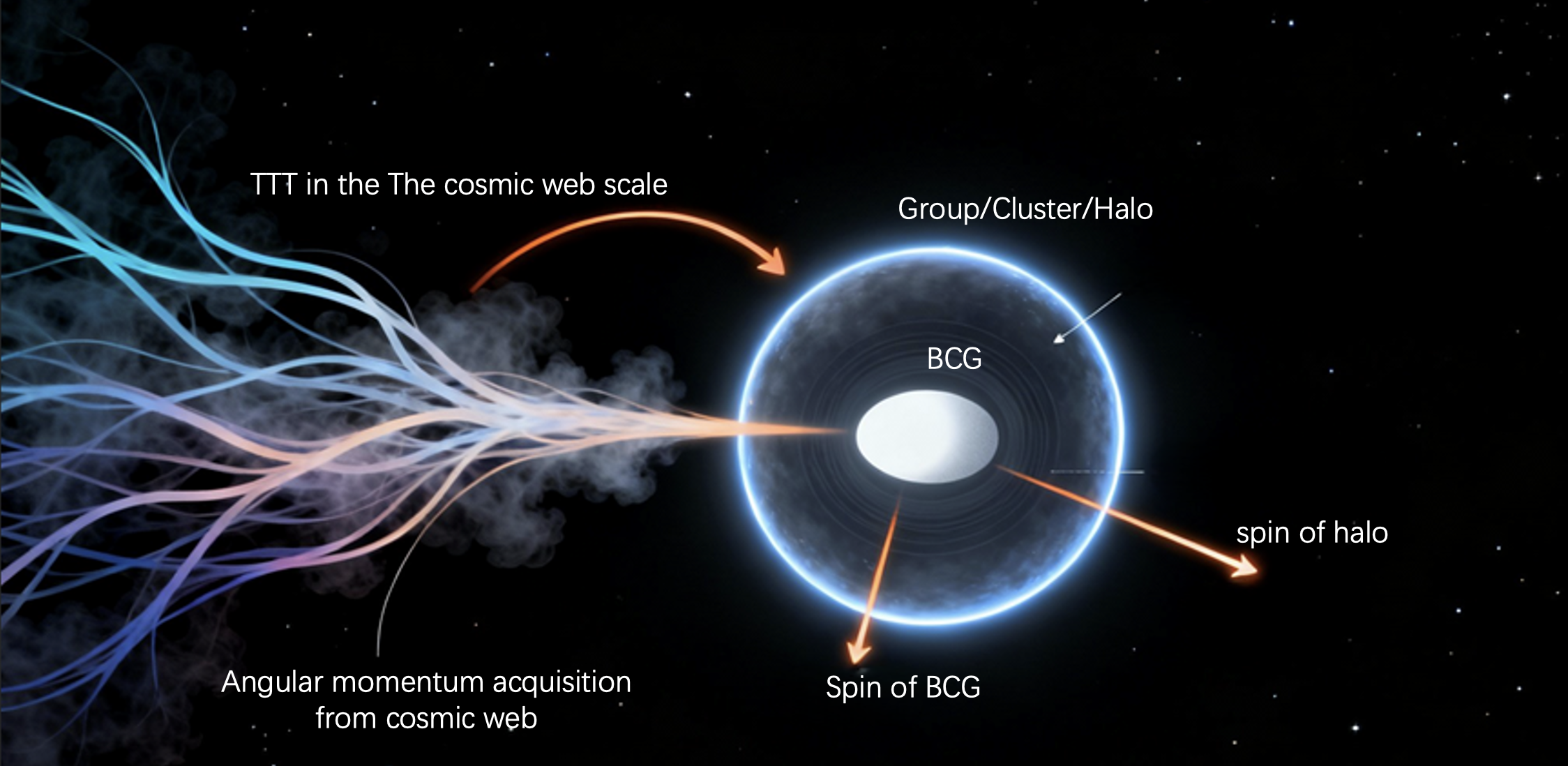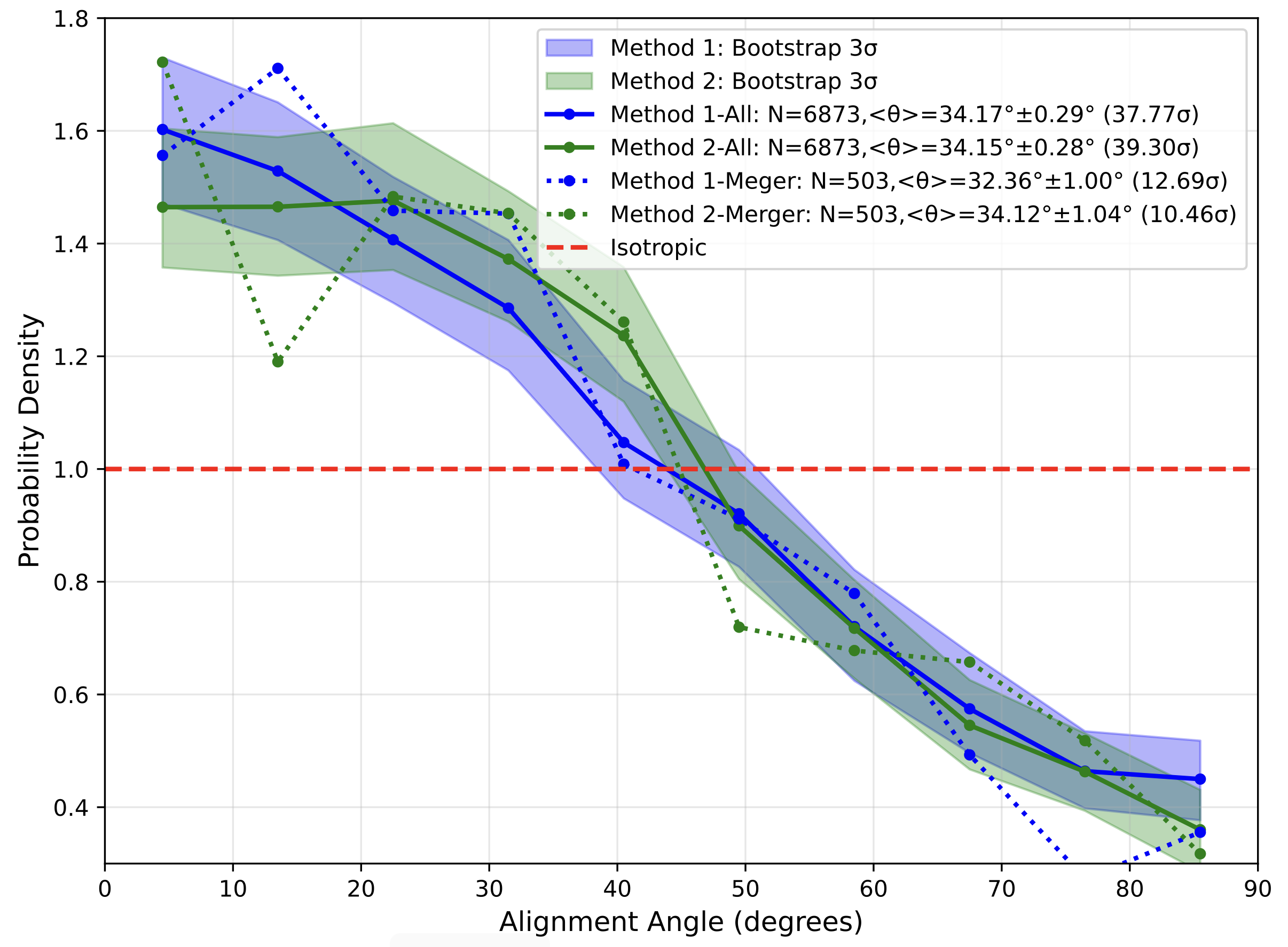Shanghai Astronomical Observatory Reveals New Evidence for Angular Momentum Transfer: Spin Alignment between Galaxy Groups and Their Central Galaxies
Recently, Dr. Peng Wang, a research fellow at the Shanghai Astronomical Observatory of the Chinese Academy of Sciences, has systematically revealed for the first time a significant directional alignment between the spins of galaxy groups and those of their central galaxies on the celestial projection plane. Using a large spectroscopic sample from the Sloan Digital Sky Survey (SDSS), this study provides the first systematic observational evidence for such alignment.
The results, titled “Observational Evidence for Spin Alignment between Galaxy Groups and Their Central Galaxies,” have been published in The Astrophysical Journal Letters. Dr. Wang is the sole author of the paper (see the screenshot of the article’s first page). By focusing on “spin” (angular momentum)—a direct dynamical quantity—the research highlights the crucial role of galaxy groups as an intermediate-scale “bridge” in the hierarchical transfer of angular momentum from large-scale cosmic structures (cosmic web/filaments) down to galaxies.

Moving beyond traditional“shape alignments,” this work directly addresses the mechanism of angular momentum transfer through “spin alignment.” In the hierarchical structure formation framework, matter flows anisotropically along the cosmic web and acquires angular momentum via tidal torques. Galaxy groups gradually assemble through accretion and mergers of smaller dark matter halos, evolving their angular momentum, which is subsequently transferred to their member galaxies, especially the central ones.
Previous observational studies have mainly used the “shape” or “major axis” as a proxy and found typical projected alignment angles of 20°–40° between central galaxies and their host halos. However, these shape-based analyses cannot directly trace the true coupling of angular momentum. This study, by directly measuring the projected spin axes of both galaxy groups and their central galaxies, provides clear evidence for “spin–spin” directional alignment—offering a more dynamical perspective on angular momentum transfer (see scientific figure).

Scientific cartoon: Schematic illustration of galaxy groups/dark matter halos acting as a bridge in the transfer of angular momentum from the large-scale cosmic web to individual galaxies.Credit: Abacus
Scientific significance:
This work identifies galaxy groups as the key nodes in the hierarchical transfer of angular momentum. From the perspective of “angular momentum transfer,” it establishes systematic evidence for the spin alignment between galaxy groups and their central galaxies, emphasizing the “bridging” role of galaxy groups in mediating angular momentum from the large-scale cosmic web to small-scale galaxies. The result provides new dynamical constraints on the co-evolution of galaxies and dark matter halos and deepens our understanding of how angular momentum is acquired, retained, and redistributed across multiple cosmic scales.
Dr. Wang notes:
“Our work provides the first systematic dynamical evidence, using projected spin axes as direct probes, that galaxy groups and their central galaxies exhibit a significant directional alignment. This not only enhances our understanding of the galaxy–halo connection, but more importantly, offers key observational evidence for tracing how angular momentum is transferred step by step from the large-scale cosmic environment down to individual galaxies.”
The study was supported by the NSFC, the Scientific Research Program of the China Manned Space Program, and Shanghai Rising-Star Program (Category A).
Paper link: https://iopscience.iop.org/article/10.3847/2041-8213/ae0ca5
Scientific contact: Peng Wang (pwang@shao.ac.cn)

Scientific result figure: Alignment signals between the spins of galaxy groups and their central galaxies. Two independent methods were applied, both yielding statistically consistent signals.
Download attachments: